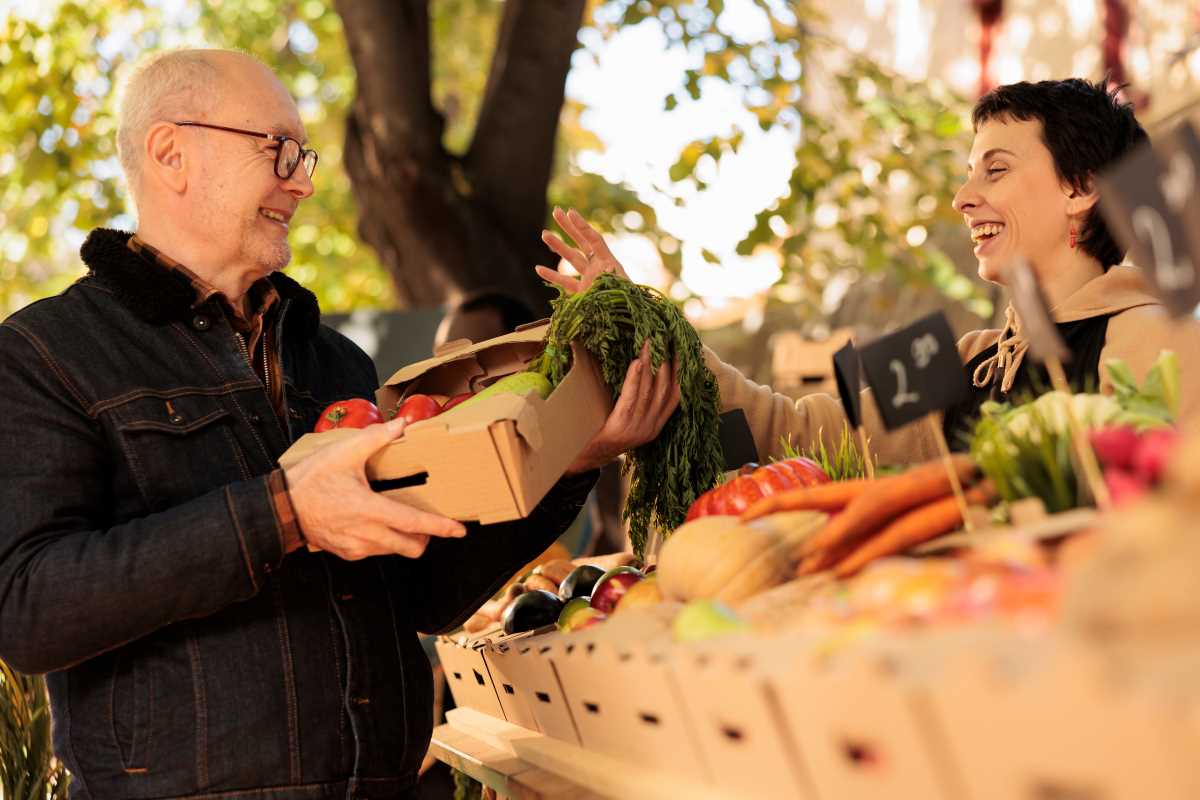Warm sunlight falls across freshly turned soil while neighbors pause from their work, swapping stories and laughter as easily as they exchange seedlings. The journey begins with tiny sprouts raised in trays and continues as bees and butterflies flutter among vibrant blossoms. Each day spent in the communal garden brings people closer, weaving bonds that stretch throughout the neighborhood. With hands deep in the earth and hearts invested in every row, the garden grows more than plants; it nurtures relationships and a sense of belonging that lingers long after the tools are set aside.
Seeds of Community Spirit
- Imagine a late-afternoon experiment where each participant plants a single seed sourced from heirloom collections: watching how a blue-podded pea contrasts with a golden sunflower or a scarlet rosemary blossom can turn an ordinary patch into a living mosaic that sparks conversation and curiosity. This thought experiment invites gardeners to view color, scent, and shape as bridges to empathy.
- Organize a “blind soil tasting,” where individuals dip a gloved finger into samples from different beds and describe aromas before seeing the plants above. This sensory challenge reveals hidden differences—sandy loam warmed by sun versus clay enriched by compost—and encourages members to learn soil science through playful exploration.
- Envision a mapping challenge in which volunteers trace underground networks of earthworms, fungal threads, and water channels using colored flags. By visualizing the invisible, participants develop a deeper respect for microbiomes at work, awakening fresh appreciation for what’s happening beneath every green shoot.
- Host a monthly swap where gardeners exchange not just seeds but handwritten notes sharing one unexpected lesson learned: a tip on preserving mint, curiosity about soil pH, or gratitude for a neighbor’s encouragement. This small ritual turns each transaction into a story that strengthens communal bonds.
These experiments push beyond typical workshop formats. They celebrate discovery, invite playful mistakes, and cultivate shared ownership. When gardeners view the plot as a canvas for collective inquiry, they write new stories together instead of repeating old patterns.
By weaving imaginative trials into routine chores, communities harvest more than produce: they harvest trust, creativity, and a sense of belonging. Seeds of community spirit sprout best when curiosity leads the way.
Proven Foundations for Lasting Growth
- Gather a diverse steering team that represents neighbors of all ages, backgrounds, and gardening experience levels. Assign rotating roles—soil tester, tool custodian, event organizer—to ensure tasks circulate and new ideas flow. Starting meetings outdoors in the actual plot space keeps discussions grounded in the lived environment.
- Secure a durable water source such as a rain barrel network or drip irrigation line. Distribute watering responsibilities by pairing newcomers with seasoned volunteers; this buddy system builds skills quickly and deepens relationships during routine tasks.
- Frame a clear charter that outlines shared values—stewardship, respect for biodiversity, openness to experimentation—in plain language. Display this charter where anyone can add feedback, fostering a living document that evolves as the garden’s needs shift.
- Use simple soil tests early and often, tracking pH shifts seasonally. Use free paper kits or smartphone apps to engage tech-savvy volunteers. Discuss results openly so everyone learns: when lime adjusts acidity, or compost remediates heavy clay, knowledge leaps from experts to novices.
- Plan quarterly meetups that double as harvest festivals, attracting interested neighbors beyond regular members. Invite local chefs or science educators to run quick demos—transforming mashed beets into vibrant dye or exploring insect roles—so learning feels festive rather than obligatory.
These foundational moves ground a garden in structure and shared purpose. By rotating roles, testing soil, and celebrating knowledge transfers, communities build resilience that weathers seasons and leadership changes alike.
Each step shines when paired with encouragement: a quick note of thanks in group chats, a chalkboard wall for shout-outs, or a morning coffee station beside the tool shed. Small acknowledgments keep momentum high even during soggy, cold days.
Top Approaches for a Thriving Plot
- Beacon Hill Plots — Seattle Neighborhood Project
- Highlights: Integrates vertical towers crafted from reclaimed wine barrels to maximize space, yielding over a dozen plant varieties in under ten square feet.
- Cost: Around $50 per tower, sourced from local upcyclers.
- Insider Tip: Line barrels with recycled coffee grounds to keep slugs at bay without chemicals.
- Malvern Ridge Collective — Suburban Allotment Gardens
- Highlights: Operates communal compost circles where members stash kitchen peelings and yard trimmings into a shared tumbling drum, producing nutrient-rich humus in eight weeks.
- Cost: No subscription fee.
- Insider Tip: Alternate green scraps with shredded cardboard to balance moisture and speed decomposition.
- Riverside Heritage Beds — City-Center Plots
- Highlights: Specializes in pollinator corridors weaving native wildflowers between vegetable rows, attracting bees and butterflies along each quarter mile.
- Cost: Funded by a $300 municipal grant per season.
- Insider Tip: Sow deep-rooted goldenrod and milkweed at edges to shelter emerging seedlings.
- Lochside Eco-Squares — Coastal Community Allotments
- Highlights: Practices tidal irrigation with manual sluice gates, using high tide to refresh freshwater tables via stone-lined channels.
- Cost: About $1,000 per section for installation.
- Insider Tip: Plant water-tolerant spinach and Asian greens nearest the gates to thrive in brief inundations.
- Eastwood Nightshade Guild — Urban Rooftop Planters
- Highlights: Uses hydroponic troughs illuminated by LED arrays, maintaining regulated temperatures for year-round leafy greens and herbs.
- Cost: Around $200 per linear foot for setup.
- Insider Tip: Swap nutrient solutions monthly and introduce beneficial microbes to suppress root pathogens.
- Greenway Pop-Up Farms — Mobile Raised Beds
- Highlights: Deploys foldable raised beds along underused sidewalks in alternating neighborhoods; each unit folds into a trailer for quick setup.
- Cost: Transport costs average $75 per drop, covered by donors.
- Insider Tip: Equip each bed with flip-up benches to double as rest spots and reduce vandalism.
These five approaches demonstrate how creativity meets resource constraints. By repurposing materials, leveraging natural water cycles, and embracing mobility, gardeners maximize output without ballooning budgets. Each model adapts locally, allowing neighbors to customize these ideas to fit their climate and culture.
When plots embrace bold experimentation, they draw in new hands eager to test ideas—initiating cycles of innovation instead of sticking to routine maintenance alone.
Sustaining Your Garden Over Time
- Rotate leadership roles every season to bring fresh perspectives. Even those who fear public speaking can co-lead a seed swap or plant scouting expedition, building skills and camaraderie while preventing burnout among veteran coordinators.
- Host informal “garden cafes” on weekend mornings, offering cocoa or iced tea beside raised beds. Conversations flow more naturally than during formal meetings, and volunteers exchange tips on pest deterrence or harvest timing in a relaxed atmosphere.
- Document every season by photographing plot transformations, then curate those images into a digital gallery or physical scrapbook displayed at local libraries. Visual storytelling fosters pride and draws interest from passersby who might join next season.
- Offer micro-grants or in-kind tool exchanges for experimental subplots—one bed dedicated to medicinal herbs, another to ancient grains. Even a ten-dollar seed packet can inspire enthusiasts to explore specialized growing practices without financial risk.
- Build alliances with nearby schools or senior centers, scheduling intergenerational field days. When children gather eggs from on-site poultry or elders share drought-resistant plant wisdom, the garden becomes a hub where knowledge flows in many directions.
Keeping the community vibrant depends on new faces and diverse activities. When routine gives way to surprises like a midnight harvest or a seed-pressing workshop, members return with renewed enthusiasm.
These small actions accumulate into a community that withstands volunteer lulls and unforeseen challenges alike.
Building Connections and Working Together
Link your garden with local cleanup drives, youth programs, and arts groups to share resources, attract new visitors, and expand its role in the community. Partnerships bring tools, seedlings, performances, and fresh ideas—turning a single plot into a vibrant hub that feeds both people and connections.

.jpg)





